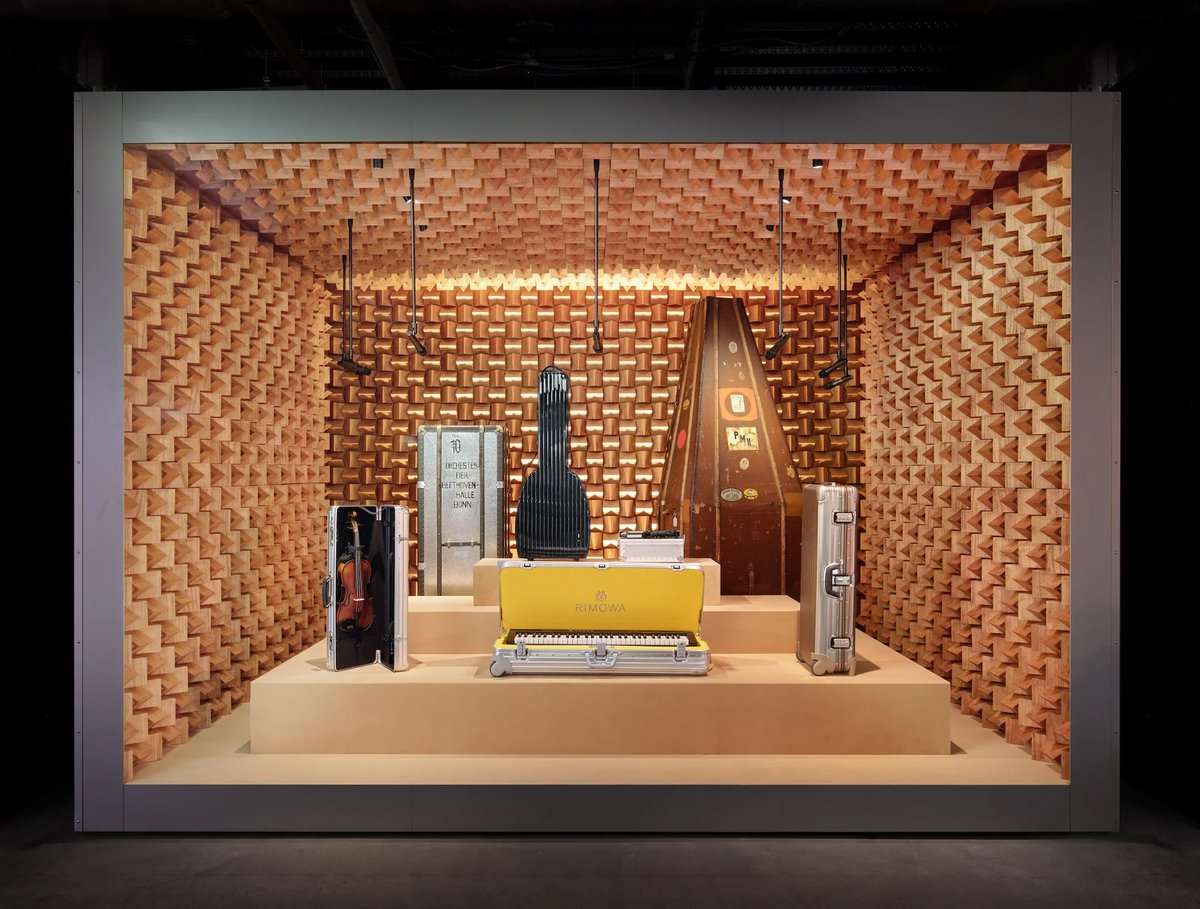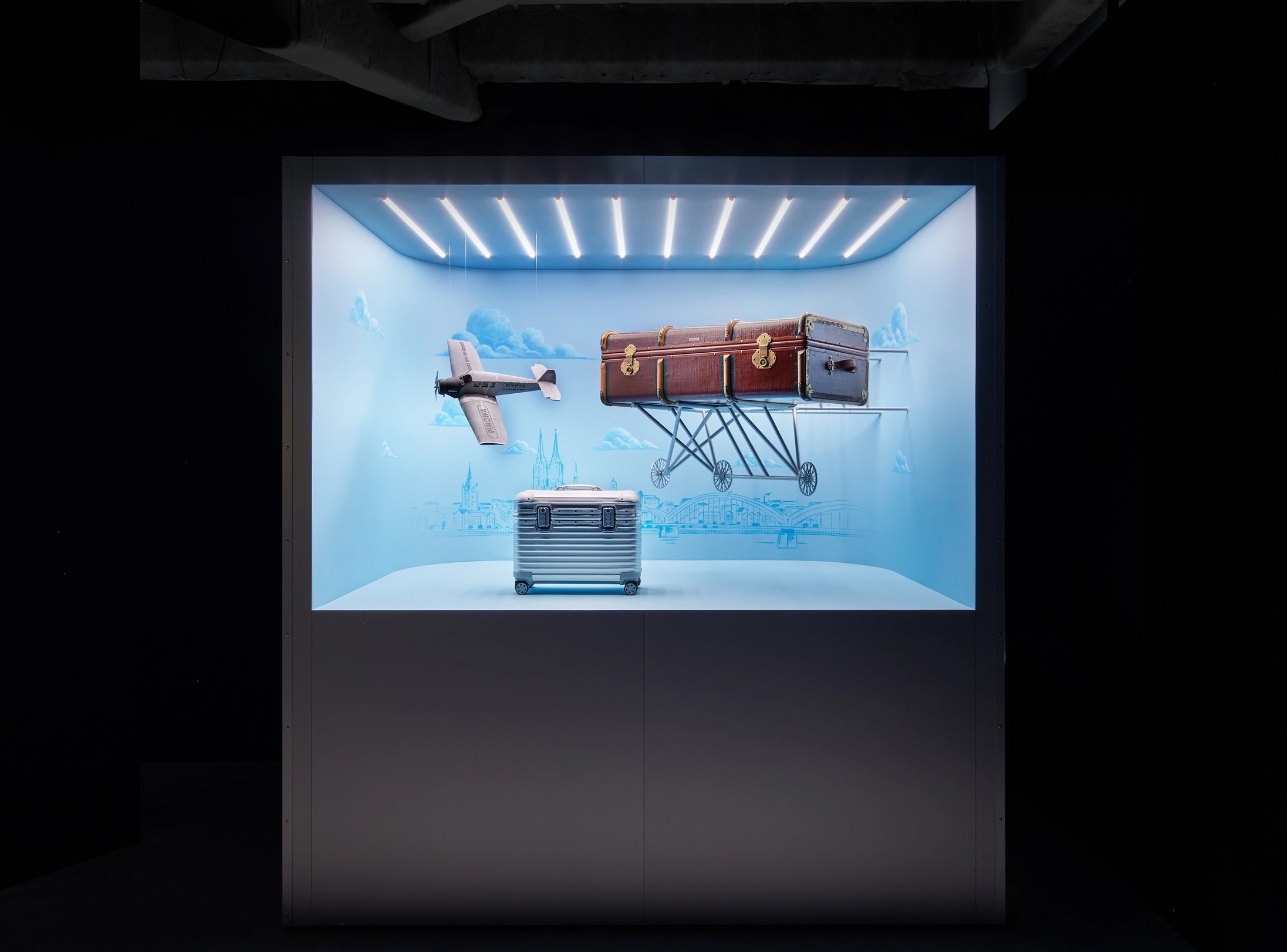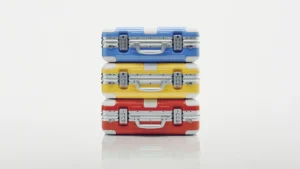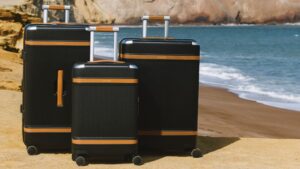It’s wild to think that when German designer Paul Morszeck produced his maiden fleet of luxury wooden trunks in 1898, the Wright brothers’ history-changing invention was still half a decade from its first flight.
RIMOWA pre-dates powered flight, the most significant event to shape everything we know about travel today. Since its inception, the brand has essentially become synonymous with the luxury luggage category, unmatched with respect to acclaim, history, and adoration. This ubiquity – and the fact it undisputedly makes the best travel accoutrement in the game – has rightfully earnt its status as the gear of choice for discerning travellers worldwide.
In this reflection on the history of RIMOWA, and in celebration of its 125th anniversary, you’ll find that for every turn and twist of fate that saw travel evolve, the high-concept luggage maker was hot on its heels.
The SEIT 1898 Exhibition, a tribute to 125 years of its most loved and innovative products, is currently on its way around the world. Read more about our favourites from the exhibition here and where you can catch them for yourself.
So how exactly has RIMOWA become one of the most timeless names in modern travel?

Legend has it…
A factory fire in the 1930s destroyed everything but the aluminium on the premises of RIMOWA’s Cologne headquarters, leading second-generation owner Richard Morszeck to proclaim it as the material of the brand’s future. This effectively closed the chapter on wood as the brand’s material of choice.
Duralumin, as the special alloy was technically known, was discovered outside the brand’s home of Cologne in 1906 and helped make possible huge aviation milestones such as the world’s first all-metal aircraft. It was the corrugated fuselage of these German-made Junker planes – specifically the commercially operated 1919 Junkers F-13 – that inspired the iconic grooves in RIMOWA’s most recognisable cases.
The alloy was lightweight, durable, and corrosion-resistant, but had a certain presence that RIMOWA’s engineers and master craftsmen dubbed as Persönlichkeit, or “personality.” Throughout the 1930’s it was offered as an optional trim on vulcanized fiber cases. Even today, the time-earned patina of endurance that emerges from aluminium makes any RIMOWA case instantly recognisable in overhead lockers or baggage carousels around the world.

A new jet-setting age
And then suddenly, not long after the world had embraced a previously unthinkable familiarity, consumer demand for travel blew out to unforeseen levels with the arrival of the jet age.
Fully pressurised and air-conditioned jet airliners changed the game when they flew from New York to London for the first time in 1952. It’s hard to believe that just 17 years later, the human race landed on the moon. Travel was snowballing at an alarming rate, and at each of these crossroads, RIMOWA smartly found itself on the right side of history.
And while RIMOWA didn’t directly find itself on the lunar surface, unlike OMEGA, one of the brand’s two innovative compound materials used in its early cases actually did.

Polycarbonate was first put to use by RIMOWA in 1953. It was this specialised polymer that was trusted by NASA for the astronaut helmets of the 1969 lunar landing. Today, polycarbonate still serves as the bulletproof cockpit canopy of the F-22 Raptor fighter jet.
The second state-of-the-art compound was ABS, or Acrylonitrile Butadiene Styrene, which is a thermoplastic first processed in the 1930s. The injection moulding, heat-and-chip-resistant, and fully dyed vibrant resin qualities of ABS made it a favourite in product design with Italian industrial designer Joe Colombo and fellow countryman and architect, Ettore Sottsass.
Combined, these two ground-breaking innovations made for attractive, resilient and lightweight luggage that became indispensable companions for globetrotters, substantially expanding the repertoire for RIMOWA.
A brand of many firsts
At its core, RIMOWA’s clear commitment to a functional aesthetic saw it spearhead many firsts in the sphere of luxury accoutrement.
The ‘Tropicana’ case from 1976, for example, often goes overlooked. Its ability to store equipment for professional film crews and photographers in excessively cold or humid climates with a fully waterproof outer shell was a huge accomplishment at its time. It wasn’t always about looking chic in the priority boarding lane.

In 2000, RIMOWA became the category first to actually offer its famous polycarbonate material to the mainstream consumer in what is now the ‘Essential’ line. Soon after, the multi-wheel system was introduced in 2001 so all wheels would turn a full 360 degrees for easy movement, and an improved security lock system landed in the lineup around 2006.
Each suitcase is 80 per cent hand-made and inspected at every stage of assembly at RIMOWA-owned factories, a testament to consistency and legacy that reigns true regardless of the make or model.
Come 2016, RIMOWA caught the attention of LVMH, the behemoth conglomerate of luxury goods, which acquired an 80% stake in the company. This partnership saw RIMOWA springboard to a collaborative brand with the extensive resource backing of LVMH.
RIMOWA’s indelible mark on both the travel industry and popular culture was guaranteed for life in 2022, cementing itself into the zeitgeist forever as an omnipresent icon of sophistication, function, and adventure.

SEIT 1898 Exhibition
It’s also had its fair share of fun, wacky, and straight-up cool limited-edition products and collaborations. We took a peek at these on the ground in Tokyo recently, and they’ll be on display in New York and Cologne in the very near future. Read more about the SEIT 1898 Exhibition (since 1898 in English) and how you can see it for yourself.
















